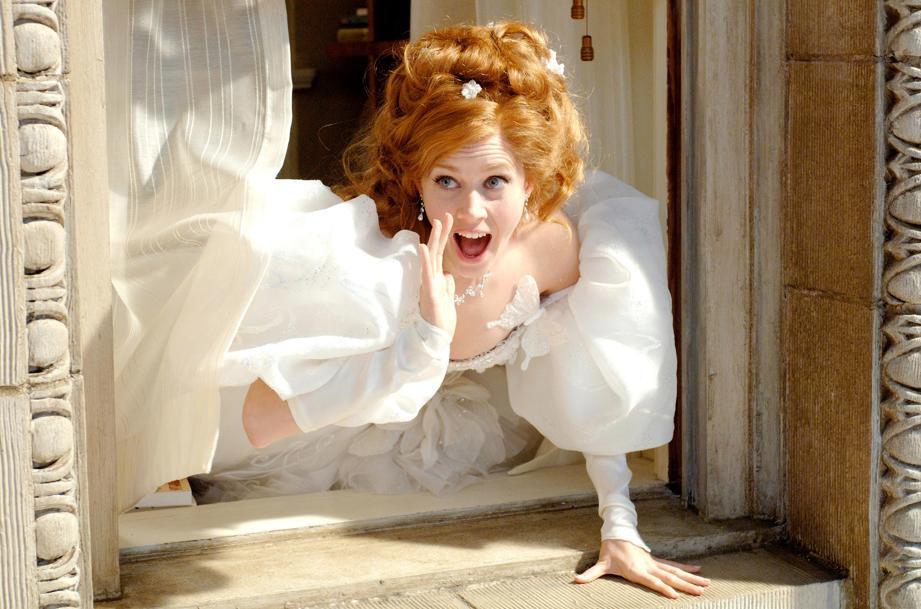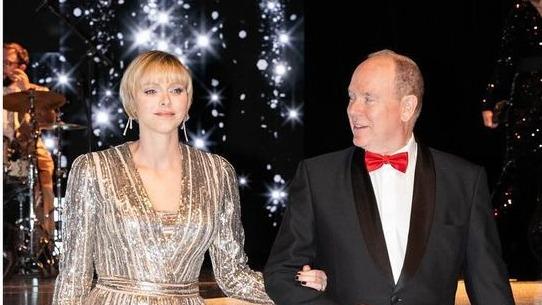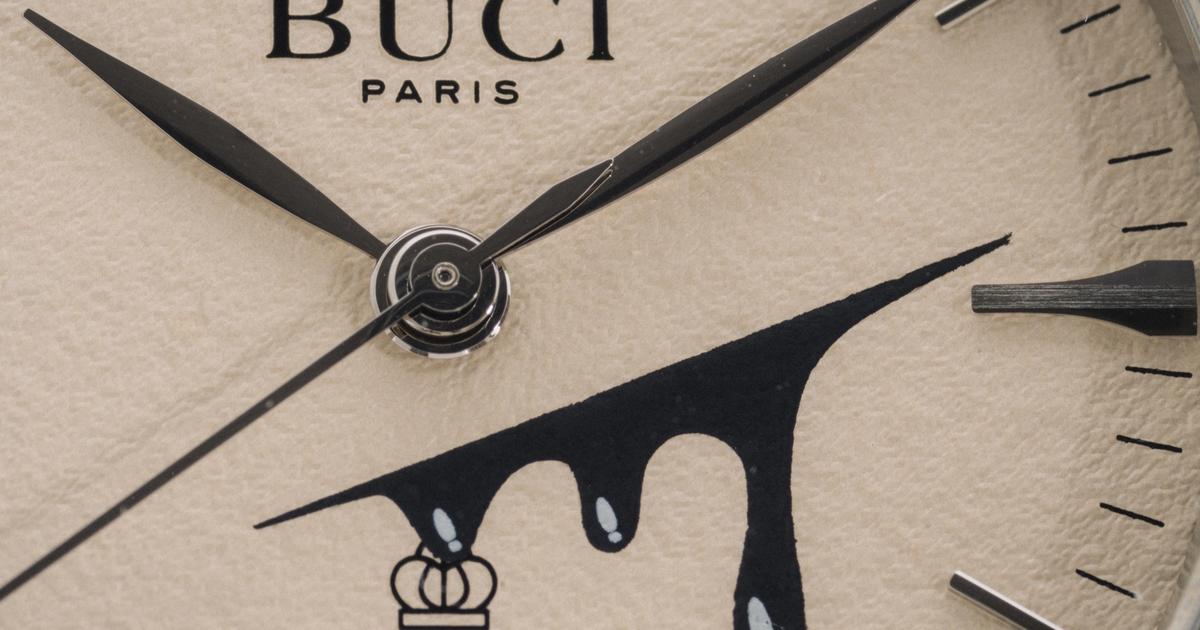Fabrice Midal, founder of the meditation school, focuses on princesses in his new book. The princesses are always right thus proposes a renewed reading of forty tales and myths that we thought we knew and which, under his inventive eye, illuminate our contemporary realities with an unprecedented light. Interview with a philosopher for whom these princesses, far from being passive dolls, potiches foolishly dreaming of Prince Charming, are the ones who decide, act and take their destiny in hand.
To discover
- Leonardo DiCaprio > Podcast: Forbidden to over 25s
In video, The Little Mermaid, the trailer
Mrs. Figaro. – How did a philosopher come to be interested in the figure of the princess and tales in general?
Fabrice Midal. – I think that philosophy is, since Socrates, to get out of the immediate utility, the obsession with profitability, to ask questions about what moves us in existence, what is right, what must direct our life. The tales bring together in a quintessential way a reflection on the meaning of existence. There is a moralistic reading, which was imposed with Charles Perrault, a psychoanalytic reading, with which I disagree, and I thought it was time to try a philosophical reading, to show how much tales tell us how to be a human. Because we are not like a cat is a cat or like a table is a table. How do you become a mother, a doctor, a child, a writer, etc. ? To be a human is declined and it is learned, it is experienced, and philosophy tries to bring it to light.
Read alsoCan we choose our desires?
How can tales guide us?
Tales, in the broad sense of the term – stories, myths, legends – have existed since the dawn of time. They are the origin of fiction. In all cultures, men tell each other stories. We know that the prehistoric paintings of the caves were not content to represent: they told. However, to tell is to inscribe the human being in a larger world. He needs to nourish himself, but also a word that gives him a place – which is what the tales do, which were initially intended for adults and testified to a deep knowledge. Over the centuries, we began to tell them to children to educate them.
The tales bring together in a quintessential way a reflection on the meaning of existence
Fabrice Midal, philosopher
And what about psychoanalytic reading?
For psychoanalysts like Bruno Bettelheim, Little Red Riding Hood has the incestuous desire to have a relationship with the wolf, which is an image of the father, and we are dealing here with the Oedipus complex. I think the latter needs to be questioned: studies show that children need to be loved and welcomed, but do not nurture the fantasy of sleeping with the parent of the opposite sex. Freud first thought that the suffering of the girls who came to consult him was due to sexual abuse. His hypothesis was poorly received, and he made another, claiming that his patients were suffering because they harbored an unconscious desire for their father. It is the radical negation of a violence that we know exists! This reading is therefore no longer tenable. Then, if we follow psychoanalysis, this tale should interest only girls and leave boys indifferent. Now, I, who am a man, was fascinated, as a child, by this tale.
See alsoThree fairy tales, three princess complexes
You propose a completely different interpretation...
For me, it describes an exploration of the unknown, of otherness, which frightens us while attracting us. We want to take this risk of being confronted with a danger, this danger sometimes proving not a danger but an open possibility. The child wonders where the wolf is, fears him and at the same time wants to meet him. And to reduce this only to the question of sexuality – or to assert, like the psychoanalyst Erich Fromm, that the story exposes the hatred that women feel towards men – does not shed light on what is so universal and poignant in this tale. For me, he says that to be human is to confront the unknown and enter into a fruitful anxiety. This message seems important to me at a time when we are witnessing a retreat of the sense of adventure in favor of a civilization of the sofa.
Les princesses ont toujours raison, by Fabrice Midal, Éd. Flammarion, 208 p., 19 €. Ed. Flammarion
But isn't Little Red Riding Hood eaten by the Wolf?
Precisely not. In the oral versions, Little Red Riding Hood says he wants to pee, the wolf lets her go but ties her to a string, and the child ties the string to a pillar outside before fleeing. She is not a princess in the strict sense of the word, and yet she is; By this I mean that she fends for herself, and happens to herself through an ordeal. But a patriarchal reading has been grafted onto the original tale with its moralization, where Little Red Riding Hood is eaten, and even worse with the Brothers Grimm, where it is the hunter who saves her, the man having to free the woman. My book also wanted to purge the tales of this patriarchal vision and reconnect with the initial versions, where young girls triumph over obstacles, far from the potiche princesses who are content to wait for Prince Charming...
That's why "princesses are always right"?
Indeed. I propose an interpretation of Cinderella inspired by Nietzsche, who worked a lot on the renunciation of the movement of life, the splendor and risk proper to existence. The one he calls the "last man" is obsessed with comfort, shrivels up and dares nothing. In doing so, he anticipated something of our society. Cinderella is the absence of renunciation, as understood by François Roustang in The End of the Complaint. The real is not pleasant, but, instead of deploring it, Cinderella relies on the possible to make something wonderful: turtledoves help her overcome the absurd sorting of lentils that has been imposed on her. And that's a real lesson.
What in our society is problematic, because we would have to fit into the boxes, not make a fuss, be like everyone else. Now, the tale says that it is not.
Fabrice Midal, philosopher
And what about the Princess with the Pea, who could pass for capricious?
Its heroine goes, in fact, against many received ideas, including the diktat of appearance. She arrives in a house, soaked to the bone and resembling nothing, knocking on the door of this castle whose prince has searched in vain for a real princess – someone who has a true nobility of soul – among those who looked like princesses. There, we have someone who says she is a princess but has absolutely no appearance and, at the same time, takes charge of her life by knocking to ask for hospitality. The prince remains passive, as often, and it is the mother of the latter who wants to look under the appearances and hides a pea under mattresses and comforters to know if the girl has the capacity to feel and experience beyond what is agreed.
For you, this princess is a hypersensitive ...
What in our society is problematic, because we would have to fit into the boxes, not make a fuss, be like everyone else. Women, in particular, are tempted to think that to be accepted and loved, one would have to be transparent, in the norm, with the same type of clothing, character, manners. Now, the tale says that it is not, and that what might seem rude, exaggeration, flippancy is actually an opportunity. The contemporary epidemic of stress and burnout shows how difficult it is for each of us to dare to happen to ourselves. The Princess with the Pea is to dare to be yourself, to dare to take your place, to dare to say things that may seem silly. She is a little clumsy, but speaks with such candor and simplicity that she allows the establishment of a real relationship.
See alsoSixteen books to fight stereotypes in fairy tales
We read through the tales the great structures of existence
Fabrice Midal, philosopher
You also have to know how to listen to yourself, as in the myth of Narcissus?
Narcissus is one of the greatest misunderstandings of our time. He is considered the emblem of perversion and egocentrism while he was a highly positive figure in the history of the West, that of the encounter with oneself. Nothing is more wrong today than the concept of the narcissistic pervert. It is not because perverts love each other too much but because they do not love themselves, are not at peace with themselves, that they manipulate and crush others... The idea that people love each other too much and that you just don't have to love each other too much to be acceptable is absurd. The contemporary vision of Narcissus is a historical and psychological misinterpretation and an erroneous reading of the myth, because Narcissus, when leaning over water, does not see that the one he loves is precisely him. He lives the situation of burn-out that we evoked: by dint of ignoring and instrumentalizing oneself, of multiplying efforts to be esteemed and accepted, to find one's place, to access a beauty that seems unattainable to us, one no longer knows who one is, what one loves, what one wants, what is right for oneself. We do not allow ourselves to be narcissistic, that is to say, to listen to ourselves.
Did you have the idea of showing how current the tales in general, and the princesses in particular, are?
Tales are eternal because they are archetypal. We read through them the great structures of existence, which is why I have not made in my book any difference between myth, legend and tale, which are similarly cut. They therefore have their place in 2023. Goldilocks and the Three Bears shows that by advocating a society of transparency, we forget that we cannot say everything, that intimacy is consubstantial with our existence and that freedom does not consist in doing what I want without regard for others, without respecting any limits. Beauty and the Beast perfectly illustrates the very current question of consent by giving us to understand what a thought yes, an enlightened yes is. You can get a yes by force, it is not consent. The Beast has wealth and omnipotence, but she lets herself die rather to force the Beautiful, who is the one who decides, while she is fragile, without resources, sacrificed by her family. The tale teaches us that only consent can form a true bond.
Tales are hope, strength, courage and anti-silly, for they do not deny evil.
Fabrice Midal, philosopher
You also offer a very original interpretation of Peau d'âne.
Like the princess reduced to fleeing her father's incestuous love by covering herself with this skin, it is often the victim, and never the aggressor, who feels guilty. When parents divorce, the child, who is innocent, feels that it is his fault; the insulted, abused girl wonders if she dressed too provocatively; The victim of moral harassment doubts and thinks that he has done something wrong. This radical and terrible reversal has always worked on me. The aggressor has the impression that it does not matter, that we do not care, that he was in his right. Bringing this mechanism to light seems to me to be most beneficial: it is not because the aggressor does not feel guilty that he is not guilty and the victim feels guilty that he is. The tales restore something of the truth, which seems to me a philosophical work. They are hope, strength, courage and anti-silly, because they do not deny evil – there is injustice, just as there is unemployment, the war in Ukraine, the ecological crisis – and far from hiding this evil, the tales stage it and help us to face it.









